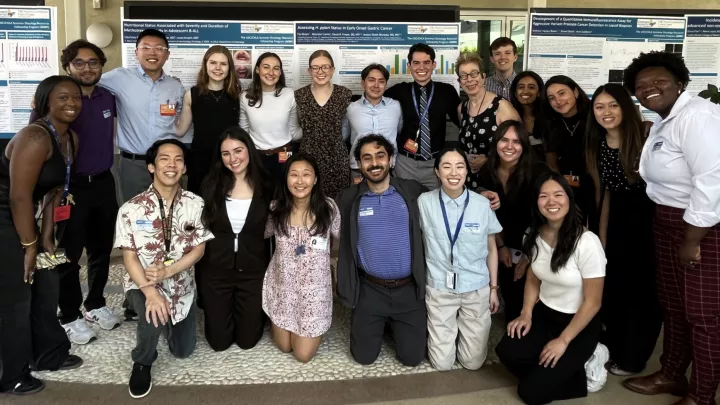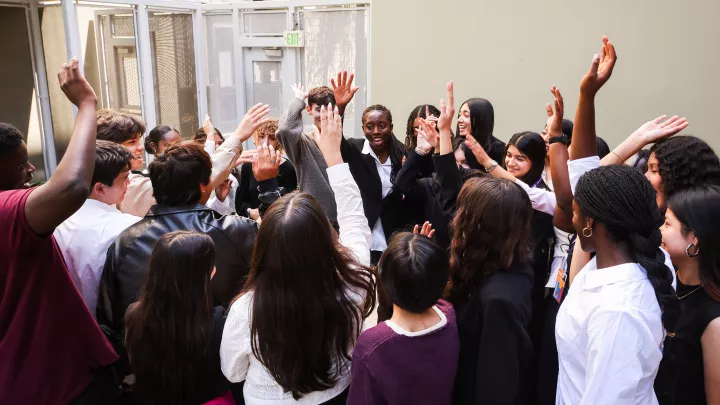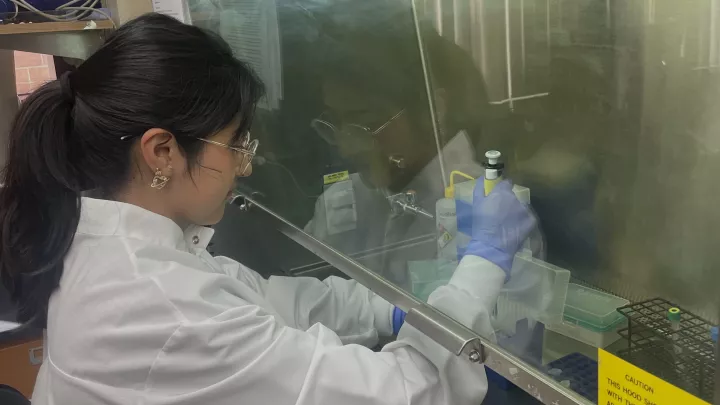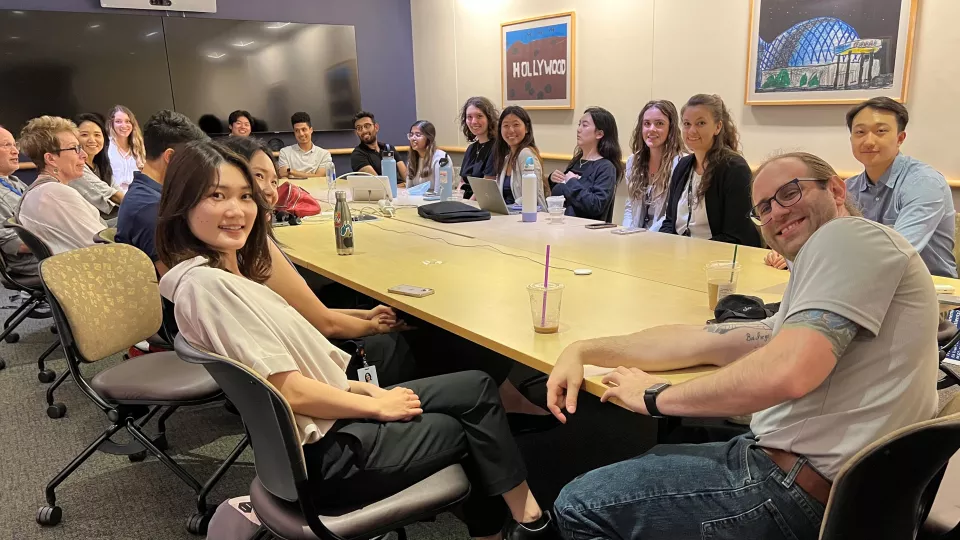
The 2023 cohort of Summer Oncology Research Fellows attend a seminar on research funding.
USC/CHLA Summer Oncology Research Fellowship Supports Medical Students Aspiring to Becoming Physician-Scientists
In cancer, there is a tremendous need for new and better therapies. Children’s Hospital Los Angeles and the USC Norris Comprehensive Cancer Center, physician-scientists play an integral role in patient care, as they can apply a deep understanding of the issues facing their patients to clinical problem-solving. Their research—whether in basic biology or seeking a specific therapy—is guided by the unmet medical needs of children, and results in innovative clinical care for patients.
This emphasis on incorporating bench research into patient care at the bedside has been the guiding rationale behind the Summer Oncology Research Fellowship (SORF) program at CHLA and USC for over 45 years and is why the National Institutes of Health sponsors the program.
"Physicians who simultaneously think like scientists are important, because they approach problems differently,” says Dr. Anat Erdreich-Epstein, MD, PhD, SORF Principal Investigator. She embodies this approach, leading a research laboratory that studies the biology of brain cancers, while also caring for children with these cancers as a pediatric oncologist at CHLA’s Cancer and Blood Disease Institute.
“Medical school is devoted to learning a huge volume of material, while scientific training is about learning the same material, and then asking not only ‘what’, but also ‘why’ and ‘how’, and thinking about it differently,” says Dr. Erdreich-Epstein, also Associate Professor at the Keck School of Medicine of USC and a member of the USC Norris Comprehensive Cancer Center. “There is considerable insight that can be gained from thinking as both a physician and scientist.”
Delivering a vision—and showing how to get there
Becoming a physician-scientist requires extensive research training on top of the already rigorous demands of medical school. One strategy to increase the number of doctors engaged in research is to encourage medical students to explore research opportunities early in their education. This is where the fellowship program comes in.
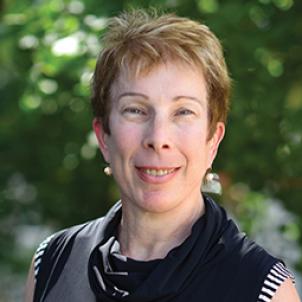
“We give students who have already shown interest in research an opportunity to spend a summer becoming more familiar with what it means to be a physician-scientist in oncology,” says Dr. Erdreich-Epstein. She directs the program, along with Martin Kast, PhD, professor at the Keck School of Medicine of USC and member of the USC Norris Comprehensive Cancer Center, who heads a laboratory on the Keck campus that is focused on cancer vaccines. With an eye to diversifying researchers and bringing in new voices and perspectives, the program seeks to recruit underrepresented minorities from various economic backgrounds.
During his summer fellowship project in the lab of Dr. Erdreich-Epstein, John Wang worked on PID1, a gene involved in brain tumors. Along with the other program fellows, Wang attended seminars on the practical aspects of becoming a physician-scientist. The talks covered topics such as negotiating for research time and the availability of different sources of funding. In one “eye-opening” seminar, he recalls, the students met four patients either undergoing cancer treatment or in remission, who shared how cancer affected their lives.
"I had the opportunity to work with Doctor Epstein—she is an MD/PhD herself—so I had some wonderful conversations with her,” says Wang, currently a second-year medical student at Indiana University. “And then I felt really motivated to pursue a PhD and become a physician-scientist.”
Making 100 times the impact
Because of the changing availability of funding support over the years, and the considerable time commitment needed to combine research with clinical care, the number of doctors in the U.S. who also engage in research has remained relatively small. Since 2001, this fellowship program has already provided 397 students the chance to immerse themselves in oncology research and an introduction to the practical aspects of working in—and running—a research lab as well as other oncology-related research.
Over the years, this summer program has paid off. Between 2001 to 2010, 11.4% of the graduates of the CHLA fellowship (16 students) reported having major involvement in research while working as physicians and 13.6% of grads reported involvement in research activity at any level, compared to only 0.13% of all U.S. physicians. “That is 100 times more,” says Dr. Erdreich-Epstein.
The power of mentorship
Developing publishing skills is essential for building a research career and obtaining grants. Under the supervision of faculty mentors, students conduct their summer project and present their research—even publishing papers and abstracts on their projects. “This year we've already had 11 students attend national and international scientific conferences and present their research, which is amazing, and more are pending,” says Dr. Erdreich-Epstein. “Delivery of a presentation at such a meeting can strengthen a student’s credentials in applying for grants and future positions, hopefully as a physician-scientist.”
Between 2001-2010, 96 program graduates published 634 papers; of those, 45% (66 fellowship graduates) were first or last author, indicating major involvement in the research. “We've had 10 papers published by students just this year alone,” says Dr. Erdreich-Epstein. “Sometimes it takes a few years to produce a paper, so this output from our most recent fellows is remarkable.”
The program encourages students to follow their curiosity—and sometimes it leads them in unintended directions.
At CHLA, Lisa Kam analyzed uveal melanoma data in the laboratory of Jesse Berry, MD, Director of the Ocular Oncology and Retinoblastoma Program. Kam had studied organic chemistry as an undergraduate at USC. But after a stint as a lab technician for Exxon Mobil, Kam became interested in public health. She went on to attend graduate school in biostatistics, studying disparities in breast cancer diagnosis, then entered medical school at Louisiana State University, where she is now a second-year student. “I am still currently interested in academic medicine, but then I realized that I didn't really need a PhD to do research,” Kam says. “I am also interested in cutaneous oncology.”
Kam’s project for Dr. Berry inspired a new interest in surgery. "Dr. Berry encouraged me to come to the operating room, once I got certified, to see how the aqueous humor is extracted from patients’ eyes, so I was able to not just play around with the data, but also to see where the data came from,” says Kam. “My mentor is so good at what she does that for several weeks I considered ophthalmology just because of her. I saw how she worked in the operating room, how she treated patients and how she spoke with them. Now I think I want to incorporate some parts of surgery in my specialty. I am still very interested in melanoma research, so I think the closest specialty to my interests right now is cutaneous melanoma. I also want to tie the clinical research that physicians and scientists do with mentoring when I'm older.”
